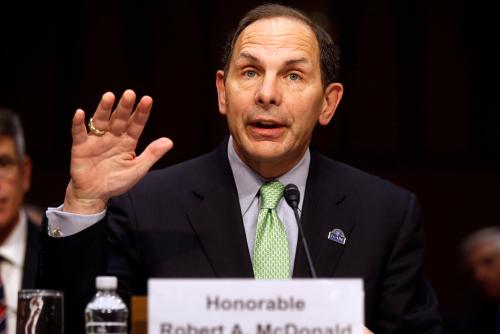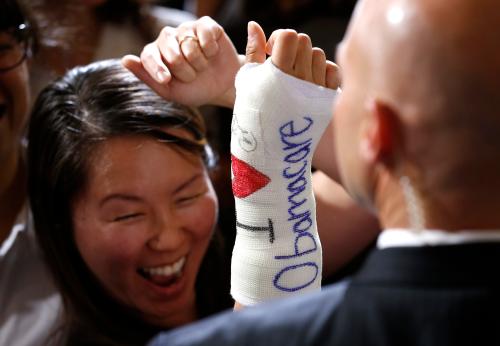As an active duty service member for over 25 years, I am accustomed to healthcare in the Department of Defense from the forward edges of the fight—at the point of combat injuries to the garrison, installations and dependent member support across the globe. It has been a great privilege to serve and knowing that competent and committed healthcare is there at every step for Soldiers and their dependents has been key to morale in both combat operations and routine missions alike. My hope is that the VA is ready for me in the same manner when I hang up the uniform for good.
In my eventual transition to civilian life, I would want similar capabilities and services in healthcare for me and my family. As I go from healthcare services in DoD and into the Veterans Administration, it is important that continuity of care for me and for other Veterans is reliable, dependable and meets our needs. But there are differences in care, service delivery, and expectations as one transitions from DoD care and into VA care. In this, the future Secretary of Veterans Affairs has work ahead to ensure the strategic success of healthcare and other service delivery meets success and customer (us) satisfaction. To be a positive agent of change, the new SecVA can execute a vision of positive VA outcomes by focusing on some key areas. Improvements in IT infrastructure and programs to allow seamless continuity of medical records between DoD and the VA, rightsizing and restructuring various pillars of VA services, improving upon the existing Choice program for selected Veterans, and tailoring care to the types of Veterans in the community would go a long way to meeting Veteran expectations.
The Commission on Care’s final report of June 30, 2016, is a good place to begin for the new SecVA. A combination of “low-hanging fruit” issues to address now and issues requiring long-term investment and strategy are recommended in the report. Addressing these will have a positive effect on the value of the VA system and provide effective, efficient, and world-class care to Veterans and families.
First, David Shulkin, nominee for SecVA, is currently the Undersecretary for Health at the VA. This provides valuable continuity as the administration transitions. Shulkin’s background and experience in leading and managing large healthcare organizations from New York and Pennsylvania have been very useful so far. Many of the issues raised in the Commission on Care’s Final Report are acknowledged and being tackled now, much because of Shulkin’s leadership. If confirmed by Congress, Shulkin has a grasp on the situation, knows where changes are needed, and likewise knows where reorganization, strategy and resources must happen to make meaningful changes and reforms across the VA System. In his new role, Shulkin should start with a listening tour to assess all functions of the system and devise responses to challenges provided. Everyone likes a leader who truly listens first and acts upon challenges where possible.
The new VA Secretary has a few quick-kills to address. First, the assessment of service-connected injuries must be prioritized to initiate care for the most urgent and important cases. Combat injuries, ongoing service-connected medical conditions and like issues should be given priority care at VA centers nearest the customer. If the customer is remote, he or she should be given priority through the ongoing Choice Program, where the Veteran is able to see providers on the economy. Other Veterans can and will be seen. But to prioritize those whose service caused injury or illness must be given care first. Not every Vet needs the VA for services.
The new Secretary must therefore improve upon the Congressionally-mandated Choice Program toward one that relies upon a system of VA Care. This system, much like TRICARE for active duty DoD employees, would allow for remote access care when principal delivery is not achievable by a local hospital or clinic. Those illnesses and injuries not service-connected are ideal candidates for care through negotiated contracts with supporting local and regional health systems. This lifts the burden of appointments, long wait times and access to routine care that has recently been problematic for VA hospitals and clinics to fill.
Second, there needs to be a determined effort to make the health records of transitioning Veterans available immediately to providers in the VA System. One would believe that DoD electronic health records (via AHLTA) of separating military members are easily transferred and available to future providers in the VA (which use VISTA). This is far from the case, as the multiple healthcare databases between DoD and the VA do not talk well to each other. This alone has the greatest potential to create negative impacts upon the continuity of care. In the long term, the electronic databases and systems will have to migrate immediately between the two departments. This should reduce costs, but also make more accurate and timely diagnoses for delivery to the Veteran customer.
In the near term, we recommend that transitioning Veterans be assigned VA system providers prior to separation in order to have continuity of care discussions. Telemedicine conferences between DoD and VA health professionals during transition for service members can go a long way to inform the gaining provider the means of understanding the Veteran patient that they are about to receive.
Third, a review of the mismatch between missions and budget is called for. The VA system needs to look at the authorities it decentralizes to regional teams and their abilities to affect contracting. There is a good deal of cost savings potentially when the VA allows subordinate elements greater decision making in terms of contracting for support and services. This is because one VA hospital and system isn’t like the next. For example, the VA has several university-affiliated hospitals whose doctors are also professors at medical schools. This allows for unique research opportunities and high quality medical professionals to be part of the VA system. It also means that centralized contracts may not always fit each region’s needs. An overhaul of contracting has the potential to increase service delivery, but also tailor support to the providers and administrators in smarter, cost-efficient ways.
Fourth, there is a growing Veteran demographic challenge to the VA system that must be tackled now. For example, many VA systems have top-quality providers in the northeast, but fewer and fewer patients as the WWII generation is rapidly expiring. Facilities and infrastructure are increasingly mismatched.
Likewise, in the South and Southwest, facilities cannot keep up with Veterans and retirees whose numbers are not going down, but in some cases up, and providers are harder to come by for many remote, rural areas. This restructuring and reorganization will also require an improvement to remote and offsite care outside the VA, as we mentioned above. But in the next 30 years, the Veteran community is expected to decrease overall, though some selected communities will see an increase. The new SecVA must consider this in any long term strategy now and should work with Congress to close old facilities and develop new ones as needed to address delivery.
A deliberate and systematic approach to finding ways to provide care for those service members with Other Than Honorable (OTH) conditions is warranted. At the time, some service member behaviors warranted their separation from service and/or non-judicial punishment. Currently, those service members whose characterization of service is OTH are not considered Veterans when it comes to care. There are many cases that need to be reviewed regarding the mental health of service members as a result of their combat deployments. Where these cases consist of traumatic brain injuries (TBI), post-traumatic stress disorder (PTSD) or substance abuse issues where the cause of the condition can be pointed back to combat and not pre-existing conditions, the VA should consider reevaluating care options. While behaviors exhibited on active duty may have warranted a service member’s characterization to be OTH, there should be a case-by-case determination to whether longer term mental and behavioral health care should be made available. While some would disagree with this proposal, we feel the VA has an obligation to seek positive outcomes for selected service members fitting these categories. There is a potential burden placed upon society otherwise.
If Vets don’t want the VA, the VA has a good potential to go away, and where and how Veterans would obtain care and services would be unknown. The existing healthcare systems across the country cannot, in the near term, absorb whole communities of Veterans and their needs. The previous SecVA, Robert McDonald, focused his efforts at customer experience to attack the value the average Veteran associated with their care. The more they had a good experience, the better the Veteran valued the services provided by the VA. To borrow from medicine, the new SecVA should “first, do no harm” in this respect. Veterans deserve world-class care in return for their investments in America’s future. In this we can all agree.
Colonel Joel “JB” Vowell has served as an infantry officer in the U.S. Army for over 25 years. He is currently the Army Chief of Staff’s Senior Fellow to the Brookings Institution.









Commentary
Confirming Team Trump: Considerations for the new Secretary of Veterans Affairs
February 3, 2017